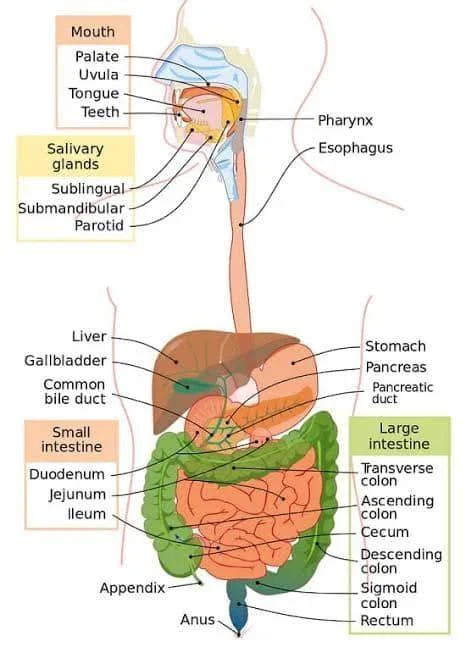How Animals Obtain Their Nutrition
⟹The process of breaking down of complex substances of food into simpler substances is called digestion.
Process of Nutrition
➥ Nutrition is the process through which animals obtain and utilize nutrients to sustain their growth, energy, and repair tissues.

- Ingestion: Taking in food.
- Digestion: Breaking down food into simpler substances.
- Absorption: Uptake of nutrients into the body.
- Assimilation: Utilizing the absorbed nutrients for growth and repair.
- Egestion: Removing undigested food from the body.
Modes of Procuring Food
➯ Animals have different modes of obtaining their food:-
- Herbivores: Animals that eat only plants. eg:- Cow.
- Carnivores: Animals that eat other animals. eg:- Lion.
- Omnivores: Animals that eat both plants and animals. eg:- Human.
- Detritivores: Animals that feed on dead organic matter. eg:- Earthworm.
Nutrients in Amoeba
➥ Amoeba is a tiny, single-celled organism that gets its nutrients in these simple steps:
Nutrition in Amoeba
1. Ingestion
➥ Amoeba takes in food by surrounding it with its pseudopodia (false feet) and forming a food vacuole.
2. Digestion➥ Inside the food vacuole, the food is broken down into smaller, soluble molecules by digestive enzymes.
3. Absorption➥ The nutrients from the digested food move into the Amoeba’s cytoplasm. This process is called diffusion. The remaining undigested particles are left behind.
4. Assimilation➥ The absorbed nutrients are used to produce energy needed for the Amoeba’s life processes.
5. Egestion➥ Undigested food is expelled from the Amoeba by pushing it out through the cell membrane.

Nutrition in Animals
Animals follow these steps for nutrition:
- Ingestion: Intake of food by mouth.
- Digestion: Breakdown of food into simpler substances.
- Digestion Process
- In Mouth: Food is crushed by teeth, mixed with saliva (salivary juice), and tasted. Saliva starts breaking down starch.
- In Oesophagus: Food moves through the oesophagus by peristaltic movement. No digestion occurs here.
- In Stomach: The stomach breaks down food with gastric juice. It contains acid and pepsin to digest proteins.
- In Small Intestine: The small intestine continues digestion, converting proteins to amino acids, carbs to glucose, and fats to fatty acids and glycerol.
- In Liver: The liver makes bile juice to neutralize stomach acid and help digest fats.
- In Pancreas: The pancreas releases pancreatic juice, which contains enzymes to digest proteins and fats.
- Absorption: Nutrients are absorbed in the small intestine through tiny projections called villi.
- Assimilation: The body uses absorbed nutrients for energy and to build and repair tissues.
- Egestion: Waste moves to the large intestine, where water is absorbed. The remaining waste is removed from the body through the anus.

Human Teeth and Their Functions
➥ Teeth are hard, bone-like structures in the upper and lower jaws of most vertebrates.
➥ They help in cutting, breaking, and chewing food.
➯ There are two types of teeth:
- Temporary Teeth (Milk Teeth): These are the first set of teeth that appear in childhood.
- Permanent Teeth: These are the adult teeth that replace the milk teeth as one grows older.
Human teeth play a crucial role in digestion:
- Incisors: Sharp teeth used for cutting food.
- Canines: Pointed teeth used for tearing food.
- Premolars: Flat teeth used for grinding and crushing food.
- Molars: Large, flat teeth used for thorough grinding and crushing.

Digestive System in Ruminants
⟹ Ruminants have a specialized digestive system to process plant material:
- Rumen: The largest stomach chamber where fermentation of plant material occurs.
- Reticulum: Collects smaller particles and moves them to the omasum.
- Omasum: Absorbs water and nutrients from the food.
- Abomasum: The true stomach where enzymatic digestion occurs.

Subscribe to My Channel






0 Comments